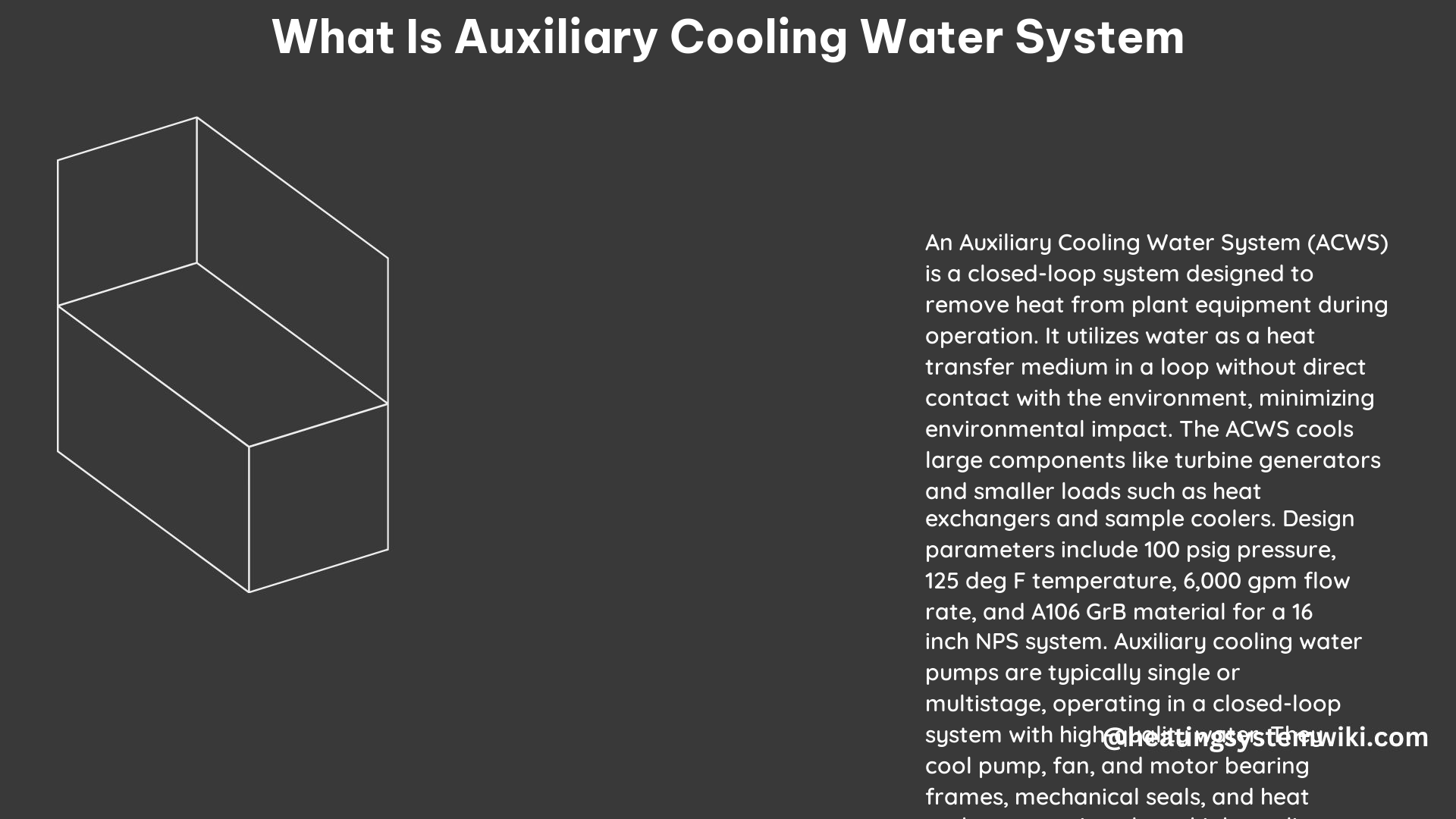The Auxiliary Cooling Water System (ACWS) is a critical component in industrial plants, responsible for removing heat from various equipment and ensuring their efficient and safe operation. This closed-loop system utilizes water as the medium to transfer heat from large components like turbine generators, large pumps, and smaller loads such as heat exchangers and sample coolers, minimizing the impact on the surrounding environment.
Technical Specifications of ACWS
The ACWS is designed with the following technical specifications:
- Design Pressure: 100 psig
- Design Temperature: 125°F (51.7°C)
- Design Flow Rate: 6,000 gallons per minute (22,712 liters per minute)
- Material: A106 Grade B carbon steel
- Pipe Size: 16 inches NPS (Nominal Pipe Size)
These specifications ensure the system can handle the required heat load and operate within the desired pressure and temperature ranges.
Auxiliary Cooling Water Pumps (ACWP)

The ACWS employs auxiliary cooling water pumps to circulate the water through the system. These pumps typically operate in a closed-loop configuration, using high-quality water. The water flow follows this path:
- The water is received from the circulating water pumps and passes through the tube side of the auxiliary cooling water heat exchanger.
- The auxiliary cooling water circulates through the shell side of the heat exchanger, where it is cooled.
- The cooled auxiliary cooling water then flows to small heat exchangers used for cooling the pump and motor bearing frames, mechanical seals, and other equipment.
The use of clean, high-quality water in the ACWS is crucial, as it prevents potential issues caused by suspended or dissolved solids that could easily plug the small heat exchangers. The fluid temperature in the ACWS typically ranges from 50°F (10°C) to 80°F (26.7°C).
Pump Selection and Metallurgy
Auxiliary cooling water pumps can be either single-stage or multistage, depending on the pressure and flow requirements of the system. Some common pump types used in the ACWS include:
- Single-stage, end-suction pumps: These heavy-duty process pumps (OH1, OH2, and BB1 types) are popular for both low- and medium-pressure service.
- Multistage pumps: For higher pressure applications, vertical multistage pumps (VS6 types) are utilized.
The castings (metallurgy) for these pumps can be made of all cast iron or ductile iron. However, for the higher-pressure VS6 pump types, the castings should be carbon steel. A common upgrade for these pumps is the use of carbon-steel castings with a 12% chromium stainless steel impeller and wear rings, which provides enhanced corrosion resistance and durability.
Importance of the ACWS
The ACWS is a critical system in industrial plants, as it plays a vital role in removing heat from various components, ensuring their efficient and safe operation. The system’s design and the selection of high-quality, clean water-circulating pumps are crucial in preventing potential issues caused by suspended or dissolved solids in the cooling water, which could lead to the plugging of small heat exchangers and other components.
By maintaining the ACWS in optimal condition, plant operators can ensure the reliable and uninterrupted operation of the facility, minimizing downtime and maximizing productivity.
